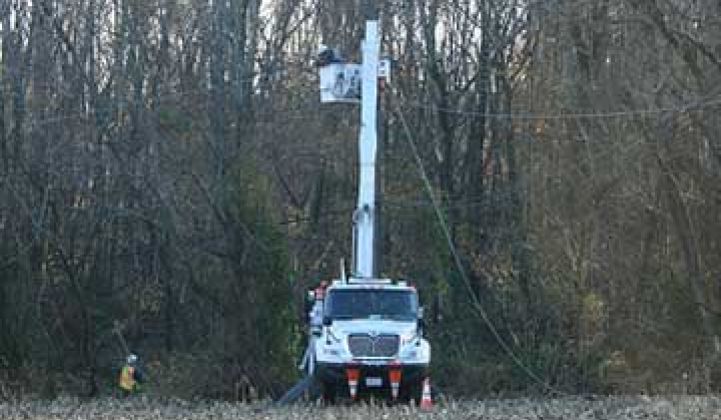Before Sandy, there was Irene. While the mid-Atlantic was largely spared during Irene, parts of southern New England were hit hard by the tropical storm and a subsequent October snowstorm in 2011.
After an investigation into the response to the two storms, the Massachusetts Department of Public Utilities imposed a $24.8 million penalty on the state’s utilities, with National Grid facing the steepest penalty of $18.7 million.
The DPU found “systematic failures” in National Grid’s preparation and response to both storms. NSTAR and Western Massachusetts Electric Company were also fined.
“The DPU understands that there will be many thousands of outages in bad storms like Tropical Storm Irene and the October snowstorm. These will not be the last severe storms we see, and the public cannot expect that the utilities can prevent outages in events of this magnitude,” DPU Chair Ann Berwick said in a statement. “On the other hand, public safety will remain our absolutely highest priority, and we will not tolerate inadequate responses to local public safety officials. Additionally, in this day and age, we expect competent communications with towns and customers alike.”
All of the companies were faulted for not communicating with other response teams and towns as quickly as they should have. The DPU also said National Grid took too long to address downed wires and respond to priority facilities. The order also said that National Grid did not secure enough restoration crews before the storm.
Massachusetts is hardly alone. Senators in Maryland have urged the state’s regulators to fine Baltimore Gas & Electric and Pepco for the response to the summer storms of 2012, known as "derechos," which led to some outages that lasted as long as a week.
Andrew Cuomo, the governor of New York, has opened an investigation into the state’s utilities’ response to Hurricane Sandy. The Long Island Power Authority has already endured some of Cuomo’s wrath, even though the governor himself is responsible for appointing the members of the utility’s board.
The investigation in New York will look at preparation and response and will also review the regulatory structures that oversee the utilities.
Outages are inevitable in large storms, but as utilities make significant investment into cutting-edge technologies that can reduce outages, there will be more examples that indicate that there is a new way of doing things.
Data analytics that use information coming off of smart meters can help to map outages and deploy crews faster. Some utilities with just partial smart meter deployments saw advantages during Sandy. Other utilities are upgrading their entire outage management systems and fault location isolation and service restoration, which can significantly cut the duration outages.
Currently, it is the wait-and-see stage for the rulings after Superstorm Sandy, but with increasing numbers of storms, there will likely be increasing penalties for utilities that don’t make the necessary investments, not only in tree-trimming, but also in all of the different technologies that can help with an outage.



